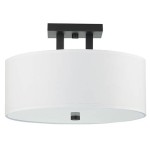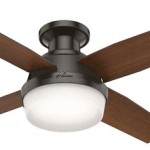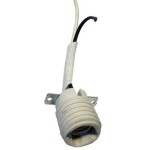How to Put a Ceiling in a Basement
When finishing a basement, one of the most important steps is installing a ceiling. A ceiling not only improves the look of the space but also helps to insulate it and reduce noise. However, there are several important factors to consider when installing a basement ceiling, including the type of ceiling you want, the height of the basement, and the materials you will need. By following these steps, you can successfully install a ceiling in your basement and enjoy the benefits of a finished space.
The first step is to determine what type of ceiling you want to install. There are three main types: drywall, drop ceiling, and suspended ceiling. Drywall is the most common type of ceiling and is made of gypsum board. It is relatively easy to install and can be painted or textured to match the decor of your basement. A drop ceiling is made of pre-cut panels that are suspended from a grid system. Drop ceilings are easy to install and can be removed for access to the ceiling above. Suspended ceilings are similar to drop ceilings but are made of larger panels that are suspended from wires or cables. Suspended ceilings are more expensive than drop ceilings but offer a more finished look.
Once you have chosen the type of ceiling you want, you need to determine the height of the basement. The height of the ceiling will determine the type of materials you will need and the installation process. If the basement is less than 7 feet tall, you will need to use a special type of ceiling joist called a furring strip. Furring strips are attached to the existing joists and provide a surface for the ceiling to be attached to. If the basement is more than 7 feet tall, you can use regular ceiling joists.
The next step is to gather the materials you will need. In addition to the ceiling joists, you will need drywall, ceiling tiles, or suspended ceiling panels, nails or screws, a hammer or drill, and a level. You may also need insulation, a vapor barrier, and a sealant.
Once you have gathered the materials you need, you can begin the installation process. The first step is to install the ceiling joists. If you are using furring strips, you will need to attach them to the existing joists using nails or screws. If you are using regular ceiling joists, you will need to cut them to the desired length and then install them between the floor joists. Once the ceiling joists are installed, you can begin installing the ceiling.
If you are installing drywall, you will need to cut the drywall to the desired size and then attach it to the ceiling joists using nails or screws. You will need to leave a small gap between the drywall and the walls to allow for expansion and contraction. Once the drywall is installed, you can finish it by painting it or texturing it.
If you are installing a drop ceiling, you will need to assemble the grid system and then attach the ceiling tiles to the grid. You will need to leave a small gap between the ceiling tiles and the walls to allow for expansion and contraction. Once the ceiling tiles are installed, you can finish them by painting them or texturing them.
If you are installing a suspended ceiling, you will need to assemble the grid system and then attach the suspended ceiling panels to the grid. You will need to leave a small gap between the suspended ceiling panels and the walls to allow for expansion and contraction. Once the suspended ceiling panels are installed, you can finish them by painting them or texturing them.
Once the ceiling is installed, you can add insulation, a vapor barrier, and a sealant to improve the performance of the ceiling. Insulation will help to reduce heat loss in the winter and heat gain in the summer. A vapor barrier will help to prevent moisture from entering the ceiling. A sealant will help to seal any gaps between the ceiling and the walls.
By following these steps, you can successfully install a ceiling in your basement and enjoy the benefits of a finished space. A ceiling will improve the look of your basement, insulate it, and reduce noise. By choosing the right type of ceiling and following the proper installation process, you can create a beautiful and functional space in your basement.

Basement Ceiling Ideas Installation

Diy Basement Ceiling Ideas 6 Best Beautiful Budget Options This Life

How To Install A New Ceiling In Your Garage Or Basement Myfixituplife

Diy Basement Ceiling Ideas 6 Best Beautiful Budget Options This Life

15 Basement Ceiling Ideas To Inspire Your Space Bob Vila

Diy Basement Ceiling Ideas 6 Best Beautiful Budget Options This Life

How To Install A Whitewashed Knotty Pine Wood Plank Ceiling Remodelaholic

5 Faqs On Finishing A Basement Ceiling Sheffield Homes Finished Basements And More

Steps For Finishing Your Basement Budget Dumpster

8 Basement Ceiling Ideas
Related Posts








